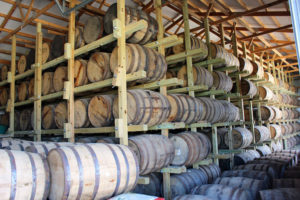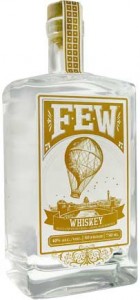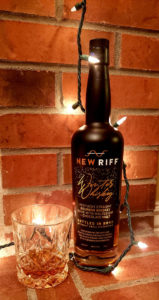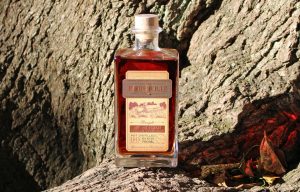A few years ago, I coined the phrase “Craft Whiskey 2.0” to describe new and evolved features that defined small whiskey-makers relative to what they were in 2005 or 2010*. However, I never codified everything I meant by that anywhere, not even in my book American Whiskey, preferring to focus on the specific issue at hand. It’s time to look at everything that Craft Whiskey 2.0 means.
The Move Away From “Small Barrels”
Rewind to the early 2010s, and the internet was full of croaking bloggers and curmudgeonly journalists crying “craft whiskey sucks” (excepting their personal favorites, that is). Arguably the principal complaint lodging by the cranks and soreheads was that these whiskeys were aged in small barrels for a matter of just several months, producing well-colored, but otherwise cloying, harsh whiskey.
They weren’t completely wrong, either. That time was characterized by what I like to call the second wave of craft distilling: dozens of early entrants, following the paths opened by the trailblazers of the mid-2000s. Most of them were trying to get a product on the market ASAP (this was also the period when white whiskey was everywhere, with even some Kentucky Majors following the craft scene and releasing white dog in a bottle), and in many instances these new distillers blindly mimicked the production processes of the big whiskey-makers.
The picture today looks nothing like that. Craft distillers that were heavily reliant on tiny and small barrels (3 to 10 gallons) like Tuthilltown and Balcones have largely moved away from them; those that continue to rely on small barrels, like Hartfield & Company, have designed their production process around the use of those barrels. Far more common now is the use of mid-sized barrels, ranging from 15 to 30 gallons. Many small distillers use full-sized American Standard Barrels (ASBs), the same 53-gallon barrels used by the Kentucky and Tennessee Majors, either entirely or in part. Some even use larger 59-gallon wine barrels.
This is best reflected in the way that most whiskeys made by small distillers these days are either bottled in bond or straight whiskeys. The former is a minimum four years of age, and the latter at least two years, and neither can be done in a tiny barrel for fear of dreadfully over-oaking the whiskey.
White Whiskey Is Being Phased Out
As previously mentioned, small barrels the shorter maturation arc that goes with them was just one stratagem employed by small distillers to put a whiskey on the market in record time. Another was to skip aging altogether and release new make as white whiskey or legal moonshine.
While legal moonshine is still going strong (indeed, it is a leading tourist draw in Gatlinburg, Tennessee), white whiskey has all but faded from the scene. The last time The Whiskey Reviewer even found one that wasn’t a historical curiosity was four years ago. Starting in 2019, I began noticing distillers like FEW Spirits and Nelson’s Green Brier no long listed their white whiskeys on their websites, and whenever I ask why the answer is either that expression was discontinued or it has been de-emphasized.
Buy-Outs
Another feature is how some of the early players with well-established brands have been heavily invested in or otherwise acquired, thereby becoming bigger players. Examples include High West being bought by Constellation Brands; Smooth Ambler selling a majority stake to Pernod Ricard; Hudson Whiskey/Tuthilltown’s gradual acquisition by William Grant & Sons; Proximo buying Stranahan’s; and the investor-driven takeover of Balcones.
The Rise Of Mid-Sized Players
A key feature of Craft Whiskey 2.0 is the emergence of a class of distillers that cannot possibly be described as craft or small at all, but aren’t part of the big players club either. Some have grown up from their origins as small distillers. Balcones, for example, grew from the classic craft scale, producing less than what is needed to fill a standard barrel per day, to a production output not far behind that of Scots distilleries like Laphroaig or Aberlour.
Others opened and went operational on a middling scale. This is especially the case in Kentucky with Angel’s Envy, Rabbit Hole and New Riff.
This development fills in the wide gap of output between the legacy giants of the industry and the several hundred tiny craft players all around America, and points to what the world of Craft Whiskey 3.0 might hold. In 2021, 95% of the world’s bourbon was made in Kentucky. There are no numbers like that for the proportion of rye whiskey made in Kentucky, but my educated guess is that it is more than half. Thanks to Bernheim and Woodford Reserve, Kentucky might also make the largest share of wheat whiskey too. The only sector not dominated by the Bluegrass state is malt whiskey. It’s inconceivable that Kentucky would ever not dominate bourbon, but if a few dozen mid-sized distilleries were to emerge, it could change and consolidate the complexion and identity of rye, wheat and malt whiskeys in important ways.
Growing Maturity
This is a point I have been making for five years now, and even the mainstream media caught on a few years ago, so there really is no excuse for the folks who persist in believing most craft whiskeys are under-aged. The typical small whiskey-maker’s line now consists of straight bourbon and/or rye whiskeys, aged for two years; and a bottled in bond version of that standard bearer released annually, aged for four years. To circle back around to barrel stock, those age marks reflect that those whiskeys could have been aged in either 30- or 53-gallon barrels, but probably not something smaller than that.
Some small distillers, like Woodinville and Laws Whiskey House, planned from the start to build their lines around properly matured or bonded whiskeys. Others, like the trailblazers at Stranahan’s and Balcones, have gradually moved towards older whiskeys with time. The result is that nowadays it isn’t hard at all to find a craft whiskey on bar or store shelves that has an age description similar to Jim Beam or Evan Williams.
The Development of Regional Appellations
It has come into vogue to speak of whiskey “terroir” in recent years. I tend to agree with Robin Robinson that terroir–a word that has a lot to do with viticulture and nothing to do with distilling–is an inappropriate term when applied to whiskey-making. It’s use is an example of lazy marketing.
I prefer to think of what is meant by “whiskey terroir” as instead being the emergence of regional appellations. The strongest example is Tennessee Whiskey, defined as it is by Tennessee state law since 2013. Other examples include the revival of the Pennsylvania and Maryland styles of making rye, but even better is New York’s Empire Rye category. This is the result of small distillers across New York State banding together to spell out the terms for their own regional appellation.
In other parts of the country, particular practices have come to be identified with their broader regions as well. For example, mesquite-smoked grains are something of a signature of the Southwestern style of making whiskey now. Not every small distiller in the Southwest uses mesquite-smoked grains anymore than every pit boss does his barbecue in a mesquite-fueled smoker, but it is now as much a part of the regional whiskey’s identity as it is that of the region’s barbecue. That example has inspired other areas to explore, develop and codify their own regional identities.
* Yes, it was me. You can check the dates.











